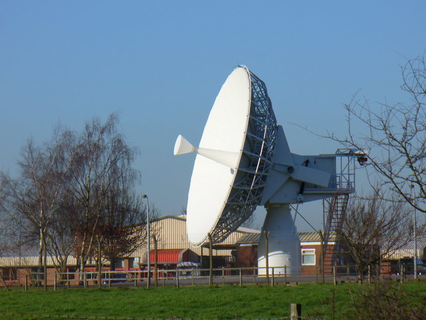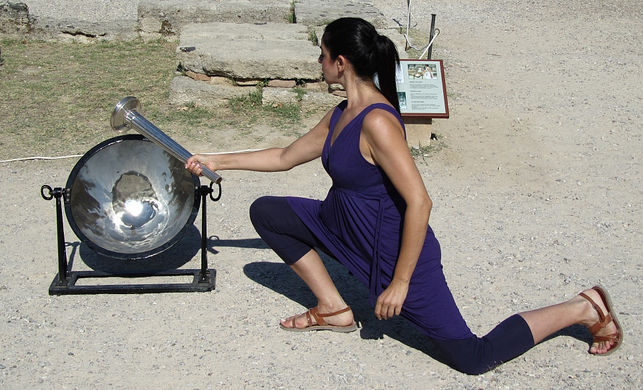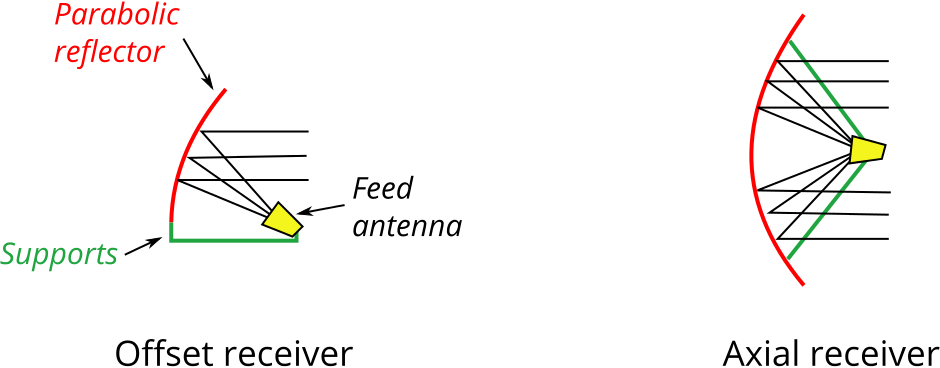
Satellite dishes are everywhere. They are much more obvious than, say, radio antennae, because of their curious shape. But have you ever asked yourself why they have that shape? The answer comes from a mathematical curve you are probably familiar with: the parabola.
Can you see how the shape of the satellite dish is related to the parabola?
The visualisation below may help you to see how the satellite dish and parabola are related.
If you rotate a parabola around its axis of symmetry, then the three-dimensional shape it sweeps out is called a paraboloid. This is the shape that a satellite dish has.
As their name suggests, satellite dishes catch electromagnetic signals from satellites that transmit your favourite movies, sports matches or whatever other programme you like to watch. You can think of these signals as arriving from space in the shape of parallel rays. When these rays hit the satellite dish they are reflected, just like light is reflected by a mirror. The shape of the dish ensures that, if the incoming rays are parallel to the axis of symmetry of the dish, then they all meet at a single point once they have been reflected. This point is called the focus (or focal point) of the satellite dish. A receiver placed at the focal point will pick up the information from all the rays entering the dish at the same time.
Are there any points at which one of the parallel rays entering the mirror area won’t reflect back into the focal point?
Satellite dishes are examples of parabolic mirrors. You can use these shapes to focus light rays in a single point – see this video . You’ve got to be careful though, as the focussed light is so intense it can start a fire – don’t try this at home! This fact was already known to the ancient Greeks. According to (a probably untrue) legend, Archimedes even put it to military effect during the siege of Syracuse in the third century BCE: using huge parabolic reflectors to capture light from the Sun, he is said to have set alight an entire fleet of Roman ships. Any form of radiation can be focussed using parabolic mirrors, which is why they are also used in radio telescopes, microphones and even to light the Olympic flame.



